#energy infrastructure
Explore tagged Tumblr posts
Text

3 notes
·
View notes
Text
#Bangalore Metro Rail Corporation Limited#energy infrastructure#electricvehiclesnews#evtimes#autoevtimes#evbusines
0 notes
Text
Global Electricity Prices Averaged 0.162 per kWh in March 2024
In March 2024, the average global electricity price stood at USD 0.162 per kilowatt-hour (kWh) for residential users and USD 0.181 per kWh for businesses. Europe reported the highest residential electricity prices at USD 0.228 per kWh, while Asia had the lowest at USD 0.082 per kWh. The International Energy Agency (IEA) forecasts a 3.4% annual increase in global electricity demand through 2026,…
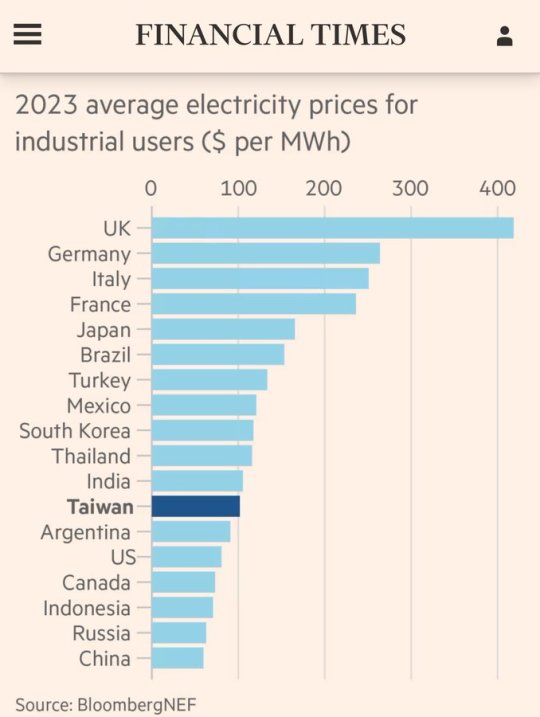
View On WordPress
#Asia#carbon emissions#Economic Growth#electricity costs#electricity demand#emerging economies energy growth#energy#energy consumption#energy efficiency#energy infrastructure#energy policy#energy prices#energy security#Energy Storage#energy technology#energy transition#Europe#fossil fuel prices#fossil fuels#global electricity prices#global electricity trends#global energy market#grid reliability#industrial electricity prices#inflation impact on energy#inflationary pressures#power generation#power sector analysis#renewable energy#renewable energy adoption
0 notes
Text
Kinder Morgan Stock Price Forecast: Long-Term Investment Potential
Over the long term, KMI’s stock has the potential to appreciate by approximately 15%, making it an attractive option for investors. #KinderMorgan #EnergyInfrastructure #StockMarket #FinancialHealth #DividendStocks #EnergySector #stockpriceforecast
Kinder Morgan, Inc. (KMI) is one of the largest energy infrastructure companies in North America. The company operates approximately 83 000 miles of pipelines and 141 terminals. These assets transport natural gas, refined petroleum products, crude oil, carbon dioxide (CO2), and more. Kinder Morgan’s extensive network plays a crucial role in the energy supply chain, ensuring the efficient and safe…
#Dividend Stocks#Energy Infrastructure#Energy Sector#Investment#Kinder Morgan#KMI#Long-term investment#NYSE#Stock Forecast#Stock market#Stock market analysis#Stock Price Forecast#Stock Price Growth
0 notes
Text
Ofgem approves Britain's largest grid investment for 'electricity super highway'
Ofgem approves Britain's largest grid investment for 'electricity super highway' #climatetargets #EasternGreenTwo
#climate targets#Eastern Green Two#electricity super highway#electricity superhighway#energy independence#energy infrastructure#fossil fuel reduction#grid investment#Jonathan Brearley#Labour government#largest grid#net zero#offshore wind#Ofgem#renewable energy#Sarah Jones#subsea cable#UK electricity grid
0 notes
Text
youtube
#youtube#militarytraining#Infrastructure Funding#Biden Administration#Global Partnerships#Infrastructure Investment#Infrastructure Finance#Investment Event#Public-private Partnerships#Global Infrastructure#International Cooperation#Sustainable Development#Digital Infrastructure#Global Investment#Green Infrastructure#Energy Infrastructure#Infrastructure Development#President Biden#Transportation Infrastructure#Economic Growth#Infrastructure Projects#Global Economy#2024#Finance
0 notes
Text
Nachtigal Dam Injects First 60 Megawatts into Cameroon's Power Grid
Discover how Cameroon's Nachtigal Dam injects its first 60 megawatts into the national power grid, marking a significant milestone in the country's energy journey. #Cameroon #NachtigalDam #HydroelectricPower #EnergyInfrastructure #RegionalDevelopment
Cameroon’s quest for enhanced energy production took a significant stride as the Nachtigal Dam, a monumental hydroelectric project, injected its initial 60 megawatts (MW) into the Southern Interconnected Grid (RIS) on May 10, 2024. This momentous occasion was marked by the presence of the Minister of Water and Energy, Gaston Eloundou Essomba, along with other dignitaries. The Nachtigal project,…

View On WordPress
0 notes
Text
Pass legislation to significantly expand transmission for clean energy NOW!
AN OPEN LETTER to THE PRESIDENT & U.S. CONGRESS
820 so far! Help us get to 1,000 signers!
Right now, there are at least 2,000 gigawatts of renewable energy waiting for permission to connect to power lines in the U.S., which is more than the total capacity of the country’s existing power plants. Wait times to connect new power plants to the grid can reach five years or more. Without rapidly improving transmission, the United States will not be able to achieve Biden's goal of 100% clean energy by 2035 or provide cheaper, more reliable electricity to American households. If the U.S. can’t build new transmission at a faster pace, roughly 80 percent of the emissions reductions expected from the Inflation Reduction Act–the largest climate legislation in U.S. history–might not happen.
That’s why I’m writing to urge Congress to pass legislation to significantly expand transmission for clean energy.
Multiple efforts are currently in play. Most recently in the House, Representatives Sean Casten and Mike Levin introduced the Clean Energy and Transmission Acceleration Act, (HR 6747) which would encourage the development of new transmission lines to carry renewable power where it’s needed while protecting the rights of communities to provide input on where lines are built and to benefit from their construction. I strongly support this bill.
But any legislation is better than none, and NONE of the bills proposed so far have been passed. This is not good.
Increasing access to clean energy will help tackle the climate crisis by ensuring the reliability of the grid and reducing consumers' bills. Renewable energies like wind and solar are quickly becoming the least expensive source of energy and we need to make sure as many people as possible get access to these clean, abundant energy sources.
Please pass a strong, fair transmission bill—like HR 6747—that prioritizes clean energy, climate change, and environmental justice. This is urgent; all of our children are counting on us to secure their futures. Thanks.
▶ Created on April 23 by Jess Craven · 819 signers in the past 7 days
📱 Text SIGN PMNVSR to 50409
🤯 Liked it? Text FOLLOW JESSCRAVEN101 to 50409
#JESSCRAVEN101#PMNVSR#resistbot#Clean Energy#Renewable Energy#Climate Action#Transmission Expansion#Green Energy#Clean Energy Now#Climate Change#Energy Infrastructure#Renewables#Climate Crisis#Energy Policy#Infrastructure Bill#Green Grid#Renewable Power#Energy Transition#Climate Legislation#Sustainable Energy#Clean Tech#Electric Grid#Energy Security#Energy Equity#Renewable Future#Grid Modernization#Climate Justice#Energy Innovation#Renewable Resources#Energy Efficiency
0 notes
Text
Earnings Summary: Schlumberger reports Q4 2023 financial results
Energy infrastructure company Schlumberger Limited (NYSE: SLB) on Friday announced financial results for the fourth quarter of 2023, reporting higher revenues and earnings. Fourth-quarter revenue increased 14% year-over-yeara to $8.99 billion, and rose 8% sequentiallyAdjusted earnings, excluding charges and credits, came in at $0.86 per share, up 21% YoYOn an unadjusted basis, earnings per share…
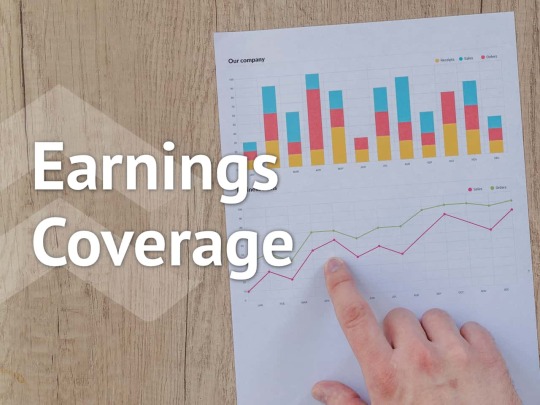
View On WordPress
0 notes
Text
Germany calls for more engagement with Africa
German Chancellor Olaf Scholz on Monday called for closer co-operation between the EU and African countries on renewable energy and green hydrogen production.
In a speech at the German-African Investment Summit in Berlin, Scholz said European countries should support developing countries in Africa in finding climate-friendly energy solutions. He noted:
“If they chose the same development path that we took in Europe or North America around 150 years ago with oil, coal and gas, then our planet will not be able to cope with it.”
According to the German Chancellor, closer co-operation between the EU and African countries can promote social and economic development while protecting the environment and climate. He noted, adding that this collaboration will be for the benefit of both sides:
“Renewable energy, climate-friendly technologies, building a hydrogen economy across countries and continents, economic diversification, all of these would provide incredible potential for closer cooperation between us.”
Scholz emphasised the importance Germany places on Africa as part of its energy transition policy and climate protection goals.
Read more HERE
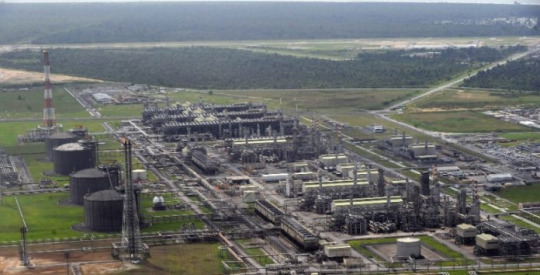
#world news#world politics#news#europe#european news#european union#eu politics#eu news#germany news#germany#olaf scholz#africa#energy prices#energy industry#energy production#energy efficiency#energy infrastructure#energy independence#renewableenergy#renewable power#renewable energy#renewable resources#renewable electricity#renewable integration#energy#hydrogen#hydrogen economy#hydrogen fuel companies#hydrogen fuel stations#climatechange
0 notes
Text
Car Wind Turbines
At present there is no car manufacturer who has integrated a wind turbine to a car to generate free electrical energy for direct recharging of a car battery.
Proposal 1: An attachable car roof wind turbine with folding blades that can be stored in an easily accessible storage compartment within the boot of a car for instant recharging of your vehicle. This will greatly reduce reliance upon city and town energy infrastructure.
Such a turbine car roof fitting will allow electric vehicle users to travel unlimited distances from country to country without the worry of where and when to recharge. It will lessen a growing burden that is presently building upon the demands of vehicle recharging economics.
Proposal 2: Two fitted tubes running parallel to the chasse positioned car battery. Each tube is filled with small wind turbines that generate energy whilst the vehicle is in motion. Each wind turbine of the car length cylinders directly send generated electricity to the vehicle battery for recharging.
The installation of wind turbines to cars has been quoted as having the capability of reducing electric vehicle energy costs by up to 70%.
0 notes
Text
/PRNewswire/ -- Energy Management Systems Market is projected to reach USD 75.6 billion in 2028 from USD 40.7 billion in 2023 at a CAGR of 13.2% according...
#energy#power#electricity#power generation#utilities#electric utilities#renewable energy#renewable#energy efficiency#energy management system#renewable energy market#energy management systems#energy markets#energy management#sustainable energy#energía#energia#energy industry#energy transition#energy infrastructure#energy supply#power management#transmission and distribution#power transmission#power distribution#utilities industry#utility
0 notes
Text
Industrial Lead-Acid Battery Market Analysis, Growth Factors and Dynamic Demand by 2032
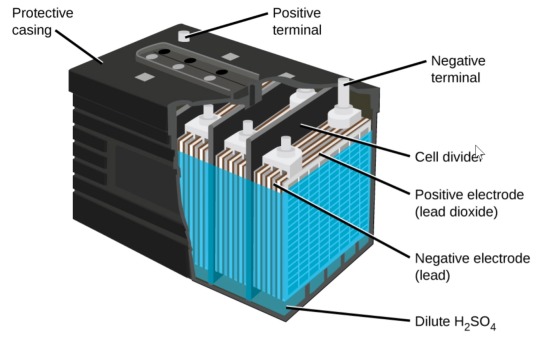
Industrial Lead-Acid Battery Market Overview:
The industrial lead-acid battery market involves the production and distribution of batteries specifically designed for industrial applications. Lead-acid batteries are rechargeable batteries that use lead plates immersed in an electrolyte solution to store and release electrical energy. They are widely used in various industries for applications such as backup power, emergency lighting, uninterruptible power supply (UPS), telecommunications, electric vehicles, and renewable energy storage.
The global Lead Acid Battery market exhibited a valuation of USD 30.6 billion in 2022, and it is projected to achieve a remarkable CAGR of 6.9% from 2023 to 2032, leading to a market size of USD 59.6 billion.
Key Points:
Types of Industrial Lead-Acid Batteries: The industrial lead-acid battery market offers different types of batteries, including valve-regulated lead-acid (VRLA) batteries and flooded lead-acid batteries. VRLA batteries, such as AGM (absorbent glass mat) and gel batteries, are maintenance-free and sealed, while flooded batteries require periodic maintenance.
Wide Range of Applications: Industrial lead-acid batteries find applications in diverse industries, including telecommunications, data centers, manufacturing, transportation, renewable energy, and utilities. They provide reliable power backup, energy storage, and support critical operations in these sectors.
Robust and Reliable Performance: Lead-acid batteries are known for their robustness and long service life, making them suitable for demanding industrial applications. They can deliver high currents, withstand harsh environmental conditions, and provide consistent performance over an extended period.
Demand and Opportunity:
Increasing Need for Power Backup: The growing reliance on uninterrupted power supply in industries such as telecommunications, data centers, and manufacturing drives the demand for industrial lead-acid batteries. These batteries serve as reliable backup power sources during grid outages or unstable power conditions.
Expansion of Renewable Energy: The expansion of renewable energy systems, such as solar and wind power, creates opportunities for industrial lead-acid batteries as energy storage solutions. These batteries store excess energy generated by renewable sources for later use, enhancing grid stability and enabling renewable energy integration.
Growth of Electric Vehicles: The increasing adoption of electric vehicles (EVs) and hybrid electric vehicles (HEVs) fuels the demand for industrial lead-acid batteries. These batteries are used in EVs for auxiliary power, such as lighting, HVAC systems, and power steering, and in HEVs for regenerative braking.
Future Forecast:
Advancements in Battery Technology: Ongoing research and development efforts focus on improving the performance and energy density of lead-acid batteries. Innovations in electrode materials, electrolytes, and battery management systems aim to enhance efficiency, cycle life, and overall performance.
Shift towards VRLA Batteries: The market is witnessing a shift towards valve-regulated lead-acid (VRLA) batteries, particularly AGM and gel batteries. These batteries offer maintenance-free operation, improved safety, and better resistance to vibration and shock, making them suitable for a wide range of industrial applications.
Integration of Smart Features: The integration of smart features, such as battery monitoring systems, remote monitoring, and diagnostics, enhances the efficiency and reliability of industrial lead-acid batteries. These features enable real-time monitoring, predictive maintenance, and optimized battery performance.
Focus on Sustainability: The market is placing increased emphasis on sustainability and environmental stewardship. Manufacturers are implementing recycling programs, adopting eco-friendly manufacturing processes, and developing lead-acid batteries with reduced environmental impact.
We recommend referring our Stringent datalytics firm, industry publications, and websites that specialize in providing market reports. These sources often offer comprehensive analysis, market trends, growth forecasts, competitive landscape, and other valuable insights into this market.
By visiting our website or contacting us directly, you can explore the availability of specific reports related to this market. These reports often require a purchase or subscription, but we provide comprehensive and in-depth information that can be valuable for businesses, investors, and individuals interested in this market.
“Remember to look for recent reports to ensure you have the most current and relevant information.”
Click Here, To Get Free Sample Report: https://stringentdatalytics.com/sample-request/industrial-lead-acid-battery-market/12895/
Market Segmentations:
Global Industrial Lead-Acid Battery Market: By Company • Coslight • East Penn Manufacturing • EnerSys • Exide Technologies • GS Yuasa ��� C&D Technologies • Crown Battery • Daejin Battery • EverExceed • Exide Industries • HBL Power Systems • HOPPECKE • Microtex Energy • MIDAC Batteries • Navitas System • Rolls Battery • Storage Battery Systems • Su-Kam Power Systems • Trojan Battery Global Industrial Lead-Acid Battery Market: By Type • FLA Batteries • VRLA Batteries Global Industrial Lead-Acid Battery Market: By Application • Automotive • Telecom • Transport Vehicles • Electric Bikes • UPS Global Industrial Lead-Acid Battery Market: Regional Analysis The regional analysis of the global Industrial Lead-Acid Battery market provides insights into the market's performance across different regions of the world. The analysis is based on recent and future trends and includes market forecast for the prediction period. The countries covered in the regional analysis of the Industrial Lead-Acid Battery market report are as follows: North America: The North America region includes the U.S., Canada, and Mexico. The U.S. is the largest market for Industrial Lead-Acid Battery in this region, followed by Canada and Mexico. The market growth in this region is primarily driven by the presence of key market players and the increasing demand for the product. Europe: The Europe region includes Germany, France, U.K., Russia, Italy, Spain, Turkey, Netherlands, Switzerland, Belgium, and Rest of Europe. Germany is the largest market for Industrial Lead-Acid Battery in this region, followed by the U.K. and France. The market growth in this region is driven by the increasing demand for the product in the automotive and aerospace sectors. Asia-Pacific: The Asia-Pacific region includes Singapore, Malaysia, Australia, Thailand, Indonesia, Philippines, China, Japan, India, South Korea, and Rest of Asia-Pacific. China is the largest market for Industrial Lead-Acid Battery in this region, followed by Japan and India. The market growth in this region is driven by the increasing adoption of the product in various end-use industries, such as automotive, aerospace, and construction. Middle East and Africa: The Middle East and Africa region includes Saudi Arabia, U.A.E, South Africa, Egypt, Israel, and Rest of Middle East and Africa. The market growth in this region is driven by the increasing demand for the product in the aerospace and defense sectors. South America: The South America region includes Argentina, Brazil, and Rest of South America. Brazil is the largest market for Industrial Lead-Acid Battery in this region, followed by Argentina. The market growth in this region is primarily driven by the increasing demand for the product in the automotive sector.
Visit Report Page for More Details: https://stringentdatalytics.com/reports/industrial-lead-acid-battery-market/12895/
Reasons to Purchase Industrial Lead-Acid Battery Market Report:
Market Analysis: The report provides a comprehensive analysis of the industrial lead-acid battery market, including current trends, market size, growth potential, and competitive landscape. It offers valuable insights into market dynamics, enabling businesses to understand the market conditions and make informed decisions.
Industry Trends: The report highlights the latest trends and developments in the industrial lead-acid battery market, including technological advancements, product innovations, and emerging markets. By staying updated on industry trends, businesses can identify opportunities and stay ahead of their competitors.
Market Forecasts: The report provides market forecasts for the industrial lead-acid battery market, including revenue projections, growth rates, and market share. These forecasts help businesses in strategic planning, resource allocation, and investment decisions.
Competitive Analysis: The report offers a detailed analysis of the competitive landscape of the industrial lead-acid battery market, including key players, their market presence, and strategies. This information helps businesses understand their competitors and devise effective strategies to gain a competitive advantage.
Customer Insights: The report provides insights into customer preferences, buying patterns, and demands in the industrial lead-acid battery market. Understanding customer needs and preferences helps businesses tailor their products and services to meet market demands effectively.
Investment Opportunities: The report identifies potential investment opportunities in the industrial lead-acid battery market, such as emerging markets, new product developments, and strategic partnerships. Businesses can use this information to explore new business ventures and expand their market presence.
Regulatory Landscape: The report covers the regulatory framework and policies governing the industrial lead-acid battery market. Understanding the regulatory landscape helps businesses ensure compliance and avoid legal issues.
About US:
Stringent Datalytics offers both custom and syndicated market research reports. Custom market research reports are tailored to a specific client's needs and requirements. These reports provide unique insights into a particular industry or market segment and can help businesses make informed decisions about their strategies and operations.
Syndicated market research reports, on the other hand, are pre-existing reports that are available for purchase by multiple clients. These reports are often produced on a regular basis, such as annually or quarterly, and cover a broad range of industries and market segments. Syndicated reports provide clients with insights into industry trends, market sizes, and competitive landscapes. By offering both custom and syndicated reports, Stringent Datalytics can provide clients with a range of market research solutions that can be customized to their specific needs
Contact US:
Stringent Datalytics
Contact No - +1 346 666 6655
Email Id - [email protected]
Web - https://stringentdatalytics.com/
#Industrial Lead-Acid Battery#Energy Storage#Battery Technology#Power Backup#Renewable Energy#Energy Storage Systems#Energy Infrastructure#Lead-Acid Batteries#Industrial Batteries#Backup Power#Energy Efficiency#Sustainable Energy#Energy Sector#Battery Systems#Electrochemical Storage#Deep Cycle Batteries#Battery Manufacturing#Grid Energy Storage#Power Generation#Industrial Applications#Forklift Batteries#Solar Energy Storage#Telecom Backup Power#UPS Systems#Electric Vehicles#Off-Grid Systems.
1 note
·
View note
Text
In Nord Stream bombings probe, German investigators see Ukraine link, reports say
BERLIN — German prosecutors have found “traces” of evidence indicating that Ukrainians may have been involved in the explosions that blew up the Nord Stream gas pipelines in September 2022, according to German media reports Tuesday. Investigators identified a boat that was potentially used for transporting a crew of six people, diving equipment and explosives into the Baltic Sea in early…

View On WordPress
#Denmark#Diplomacy#Energy infrastructure#Energy supply#EU-Russia relations#Foreign policy#German politics#Germany#Pipelines#poland#russia#Sweden#ukraine#Volodymyr Zelenskyy#War in Ukraine
0 notes
Text
Hitachi’s Innovative Power Transmission Technology Ensures Clean Energy for NY Homes

Making long-distance energy transfer a reality
Decarbonization goals require the government to work closely with the private sector to develop effective solutions for clean energy transmission. These public-private partnerships, such as the ambitious project in New York leveraging Hitachi’s high-voltage direct current (HVDC) technology, is essential if objectives at the state and local levels are to be achieved.
However, though emerging tools and technologies aim to reduce carbon emissions, the problem of electricity transmission has been a major obstacle. The project in New York is setting the bar for public-private partnerships in the energy sector with Hitachi’s unique technology and is making long-distance energy transfer a reality.
Renewable energy transmission to power New York
The state of New York’s Climate Leadership and Community Protection Act has set a target to be powered by 70% renewable energy by 2030^ . Historically, the state has been reliant on traditional and dispatchable energy sources like gas and coal. But most renewable energy sources must be held in reserve until needed. Accessing renewable energy on demand requires a means of storing power for later use.
Initially, the challenge was to find a suitable renewable power reservoir that was well-positioned for the transfer of renewable energy to and from the state. As Quebec relies mostly on hydropower generation, its infrastructure and capacity provided renewable energy storage capabilities to its neighbor. Next, an environmentally responsible means of bringing clean hydropower from Quebec to New York City was facilitated by Hitachi’s HVDC technology.
As the technology powers the Champlain Hudson Power Express (CHPE) link between Quebec and New York City, it deploys long distances underground and underwater, to bypass legacy transmission bottlenecks and meet the growing demand for clean power. Using Hitachi’s HVDC Light technology, CHPE will transfer up to 1,250 megawatts of electricity, enough to power 1 million New York homes.
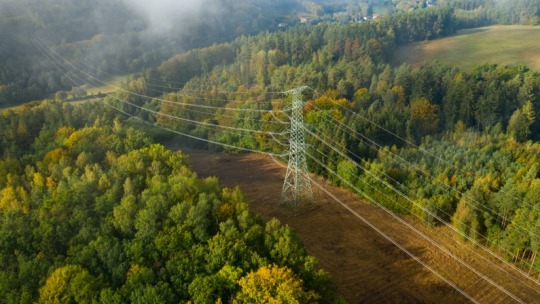
Hitachi’s HVDC for clean energy transmission
As a New York City mandate requiring the installation of electric appliances comes into force, demand for electricity in the city will grow. With HVDC Light’s ability to promote resource diversity to overall resource reliability, the CHPE system will be better equipped to meet the increase in electricity consumption.
HVDC Light further supports the state’s climate goals by maintaining a low environmental impact, and its converter stations likewise have a small carbon footprint. The CHPE project is expected to create 1,400 jobs from the construction phase, bringing $50 billion in economic benefits to New York state. The impact of the project is projected to be equal to removing 44% of passenger vehicles from the city. ^^
Hitachi’s work on the CHPE system reflects the company’s commitment to deploying technology to achieve social good by making it feasible to achieve critical sustainability goals.
Discover how Hitachi is driving social innovation and digital transformation in Energy:
Sources
^ https://www.governor.ny.gov/news/governor-hochul-announces-new-framework-achieve-nation-leading-six-gigawatts-energy-storage#:~:text=Today's%20announcement%20supports%20the%20Climate,zero%2Demission%20electricity%20by%202040.
^^ PA Knowledge Limited, “Champlain Hudson Power Express,” May 10, 2021, https://chpexpress.com/wp-content/uploads/2021/05/PA-Consulting-Tier-4-REC-Bid-Report_05-10-2021.pdf
#energy storage#power transmission#energy infrastructure#energy storage solutions#transmission solutions#energy transmission#transmission technology#electricity Transmission#electric power transmission#power transmission system#transmission capacity#renewable energy transmission#transmission infrastructure#power transmission solutions#HVDC technology#energy transmission system#clean energy transmission#green power transmission#energy transmission technology#innovative transmission technology#high-voltage direct current#long distance energy transfer#long distance power transmission#hvdc light transmission technology#sustainability
0 notes
Text
African poverty is partly a consequence of energy poverty. In every other continent the vast majority of people have access to electricity. In Africa 600m people, 43% of the total, cannot readily light their homes or charge their phones. And those who nominally have grid electricity find it as reliable as a Scottish summer. More than three-quarters of African firms experience outages; two-fifths say electricity is the main constraint on their business.
If other sub-Saharan African countries had enjoyed power as reliable as South Africa’s from 1995 to 2007, then the continent’s rate of real GDP growth per person would have been two percentage points higher, more than doubling the actual rate, according to one academic paper. Since then South Africa has also had erratic electricity. So-called “load-shedding” is probably the main reason why the economy has shrunk in four of the past eight quarters.
Solar power is increasingly seen as the solution. Last year Africa installed a record amount of photovoltaic (PV) capacity (though this still made up just 1% of the total added worldwide), notes the African Solar Industry Association (AFSIA), a trade group. Globally most solar PV is built by utilities, but in Africa 65% of new capacity over the past two years has come from large firms contracting directly with developers. These deals are part of a decentralised revolution that could be of huge benefit to African economies.
Ground zero for the revolution is South Africa. Last year saw a record number of blackouts imposed by Eskom, the state-run utility, whose dysfunctional coal-fired power stations regularly break down or operate at far below capacity. Fortunately, as load-shedding was peaking, the costs of solar systems were plummeting.
Between 2019 and 2023 the cost of panels fell by 15%, having already declined by almost 90% in the 2010s. Meanwhile battery storage systems now cost about half as much as five years ago. Industrial users pay 20-40% less per unit when buying electricity from private project developers than on the cheapest Eskom tariff.
In the past two calendar years the amount of solar capacity in South Africa rose from 2.8GW to 7.8GW, notes AFSIA, excluding that installed on the roofs of suburban homes. All together South Africa’s solar capacity could now be almost a fifth of that of Eskom’s coal-fired power stations (albeit those still have a higher “capacity factor”, or ability to produce electricity around the clock). The growth of solar is a key reason why there has been less load-shedding in 2024...
Over the past decade the number of startups providing “distributed renewable energy” (DRE) has grown at a clip. Industry estimates suggest that more than 400m Africans get electricity from solar home systems and that more than ten times as many “mini-grids”, most of which use solar, were built in 2016-20 than in the preceding five years. In Kenya DRE firms employ more than six times as many people as the largest utility. In Nigeria they have created almost as many jobs as the oil and gas industry.
“The future is an extremely distributed system to an extent that people haven’t fully grasped,” argues Matthew Tilleard of CrossBoundary Group, a firm whose customers range from large businesses to hitherto unconnected consumers. “It’s going to happen here in Africa first and most consequentially.”
Ignite, which operates in nine African countries, has products that include a basic panel that powers three light bulbs and a phone charger, as well as solar-powered irrigation pumps, stoves and internet routers, and industrial systems. Customers use mobile money to “unlock” a pay-as-you-go meter.
Yariv Cohen, Ignite’s CEO, reckons that the typical $3 per month spent by consumers is less than what they previously paid for kerosene and at phone-charging kiosks. He describes how farmers are more productive because they do not have to get home before dark and children are getting better test scores because they study under bulbs. One family in Rwanda used to keep their two cows in their house because they feared rustlers might come in the dark; now the cattle snooze al fresco under an outside lamp and the family gets more sleep.
...That is one eye-catching aspect of Africa’s solar revolution. But most of the continent is undergoing a more subtle—and significant—experiment in decentralised, commercially driven solar power. It is a trend that could both transform African economies and offer lessons to the rest of the world."
-via The Economist, June 18, 2024. Paragraph breaks added.
#one of the biggest stories of this century is going to be the story of the African Renaissance#I promise you#well preferably they'll come up with a non-European term for it lol#but trust me it WILL happen and it will be SO good to see#africa#south africa#nigeria#kenya#solar#solar power#solar panels#solar pv#energy#clean energy#poverty#electrification#distributed energy#electricity#infrastructure#hope#solarpunk#good news#solar age#<- making that a tag now
416 notes
·
View notes